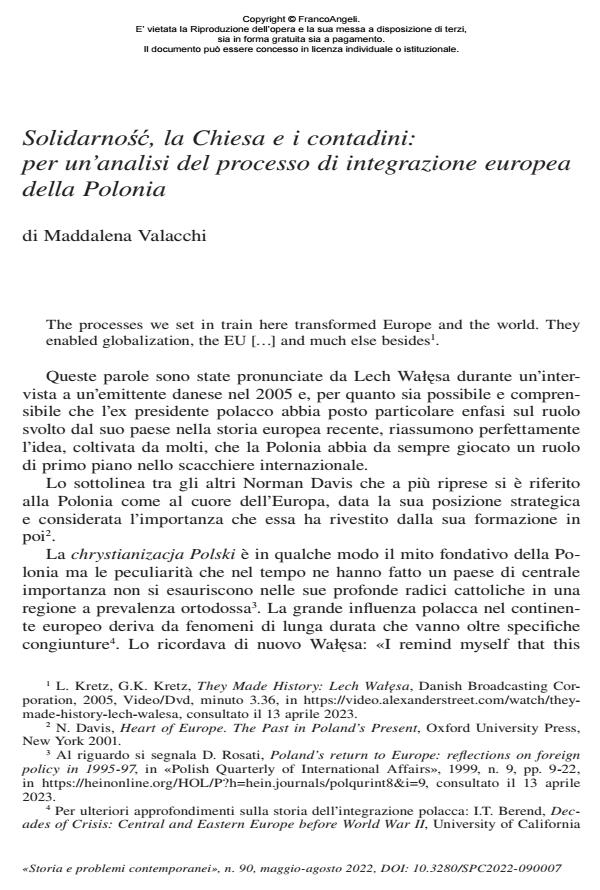Solidarity, the church and the peasants: an analysis of the European integration process of Poland
Journal title STORIA E PROBLEMI CONTEMPORANEI
Author/s Maddalena Valacchi
Publishing Year 2023 Issue 2022/90
Language Italian Pages 22 P. 100-121 File size 183 KB
DOI 10.3280/SPC2022-090007
DOI is like a bar code for intellectual property: to have more infomation
click here
Below, you can see the article first page
If you want to buy this article in PDF format, you can do it, following the instructions to buy download credits

FrancoAngeli is member of Publishers International Linking Association, Inc (PILA), a not-for-profit association which run the CrossRef service enabling links to and from online scholarly content.
This work aims to analyze all the steps, the main players and the reasons that pushed Poland towards the European membership after 1989. In this frame, and trough a comparative analysis of the available bibliography and archival sources, the author has studied the role of the Solidarity movement, the Catholic Church and the rural population. The path of each one of these fundamental actors and the relationships developed among them have been deepened in order to evaluate their specific role in the construction of the European Union.
Keywords: European Union, Cold War, solidarity, Poland, farmers, Catholic Church
Maddalena Valacchi, Solidarnosc, la Chiesa e i contadini: per un’analisi del processo di integrazione europea della Polonia in "STORIA E PROBLEMI CONTEMPORANEI" 90/2022, pp 100-121, DOI: 10.3280/SPC2022-090007